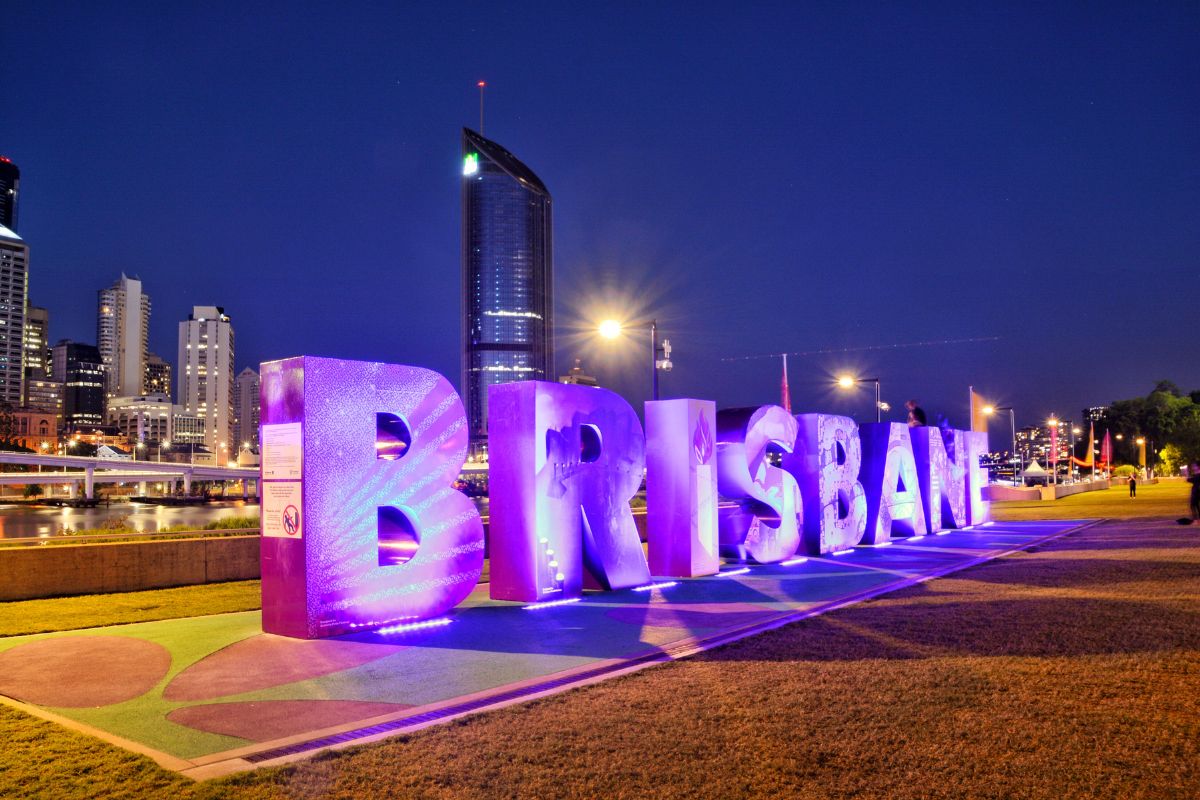I had a recent holiday in Australia and, of course, being the pond plant addict that I am, I couldn’t help but do a bit of local ‘research’ while I was there! While I was catching up with my good friend Paul, who runs a Brisbane pressure washing company, it turns out he’s equally obsessed with pond plants! Paul showed me around the beautiful water gardens at his house in Brisbane’s inner southside at Woolloongabba. I hope I spelt that right – it’s quite a mouthful – as are so many suburbs in the capital of Australia’s sunshine state, Queensland! It was great to have a local Brisbanite guide to show me the amazing variety of aquatic plants they have down-under.
7 Of My Favourite Australian Pond Plants
Nardoo (Marsilea Drummondii)
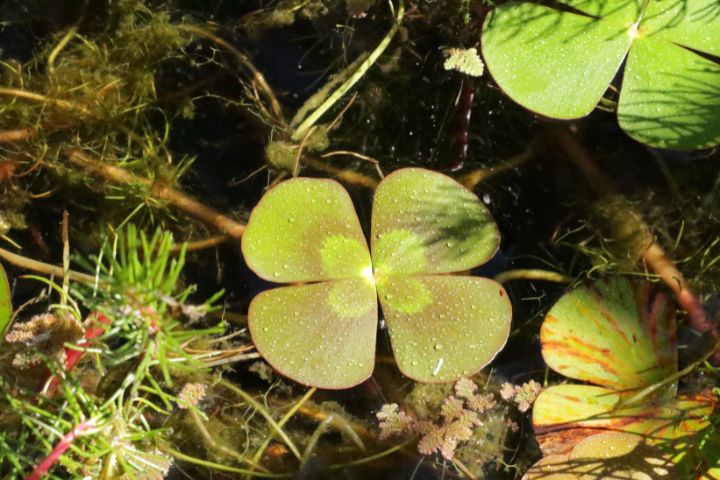
Nardoo, or Marsilea Drummondii, is uniquely Australian with a historical twist and my personal favourite. It has intriguing clover-like leaves that respond to light changes, floating on the water surface in ponds up to about 12 inches deep. This plant isn’t just for show; it’s edible and was a survival food for the famous explorers Burke and Wills. Besides, it provides shelter and nourishment for aquatic wildlife.
White Water Fringe (Nymphoides Indica)

The White Water Fringe or Snowflake (scientific name ) is native to many tropical areas and grows particularly well in Queensland. Note that it has been called a weed in parts of Florida! Snowflake has round waterlily like leaves that float on the water surface. The small, fringed flowers are white and resemble a snowflake – well maybe if you grow up in a tropical area and have never seen snow! It’s a full aquatic plant with a recommended depth of around 12 inches.
Brahmi (Bacopa Monnieri)
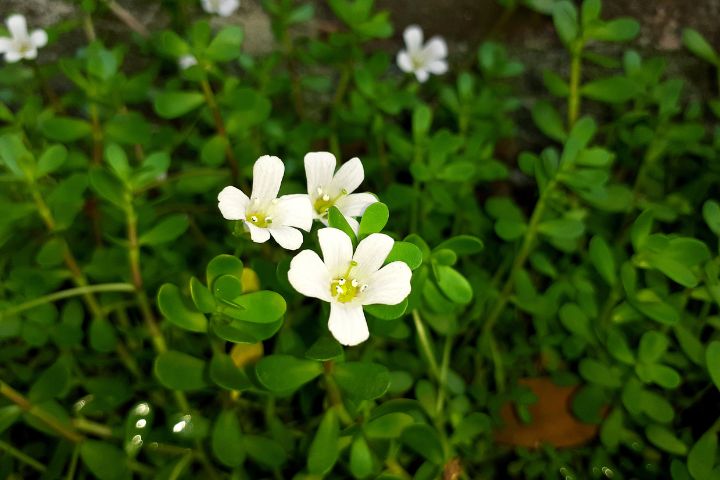
Brahmi, or Bacopa Monnieri, isn’t just a pretty face; it’s a multifunctional Australian native. Known for its memory-boosting properties in traditional Aboriginal medicine, this plant sports petite white flowers and succulent leaves that elegantly float on water. It’s a resilient grower, adaptable to various water depths up to about 8 inches. Besides adding beauty, Brahmi plays a crucial role in purifying pond water and acts as an oxygenator when submerged.
Shield Pennywort (Hydrocotyle verticillata)
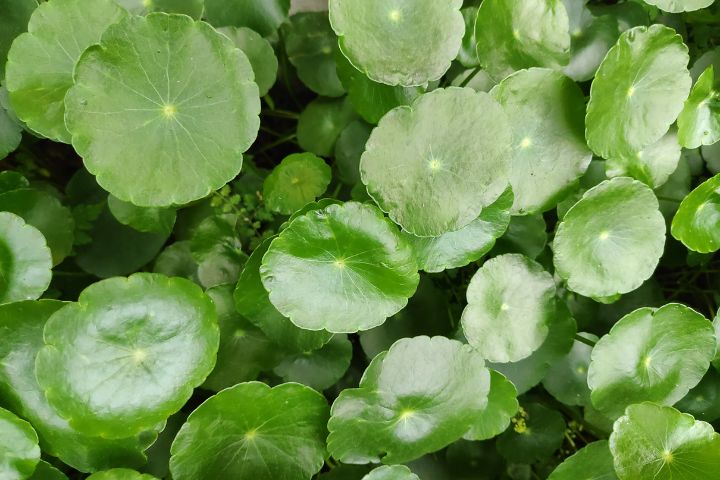
The Shield Pennywort, known scientifically as Hydrocotyle verticillata, is an Australian gem ideal for pond settings. Imagine small, round leaves sprouting in umbrella-like clusters, creating a lush, vibrant tapestry over your pond. When it blooms, it showcases tiny white flowers. Not only is it visually appealing, but it also serves as a natural shade provider and a haven for fish and other aquatic life. You can easily grow it in shallow waters, up to about 4 inches deep.
Running Marsh Flower (Villarsia reniformis)
Villarsia reniformis, commonly known as the Running Marsh Flower, brings a touch of Australian summer to your pond with its glossy leaves and vibrant yellow flowers. It’s a hardy plant, thriving in water depths of about 2 inches. I found that its real charm lies in attracting pollinators like bees and butterflies, making it a valuable addition for supporting local ecosystems. I was surprised to find out from Paul that Australia has a wide variety of native bees. Indeed they are much smaller than European bees and they’re all stingless! Always surprising with his many talents, Paul even gave me some of the Australian native bee honey that he had harvested from his hives. Can’t say I was a big fan though.
Knobby Club Rush (Ficinia nodosa)
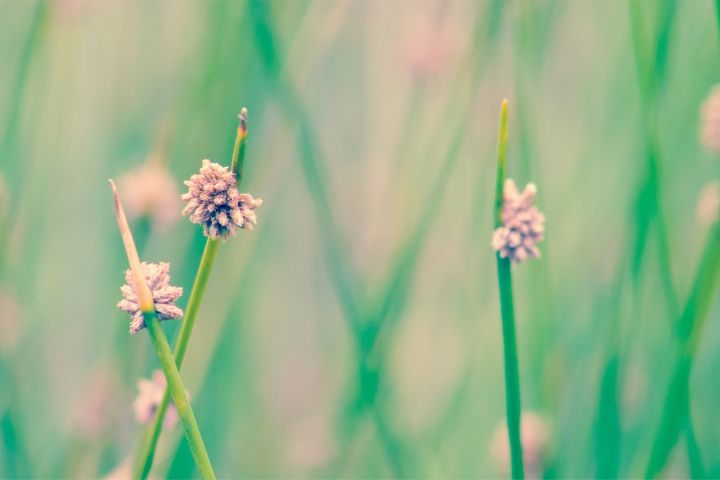
Ficinia nodosa, known as Knobby Club Rush, is a textural wonder from Australia. Its long, slender leaves form intriguing clumps, perfect for adding a distinct look to your pond. This plant is not just beautiful though. It’s a natural habitat for frogs and acts as a biological filter, especially after rain. While I was visiting Paul, a famous spring-time Brisbane thunderstorm hit around dusk. After it passed, I found the sound of frogs chirping away was simply wonderful. Best grown in shallow waters, Nobby Club Rush is a resilient and low-maintenance choice, suitable for all levels of pond enthusiasts.
Azolla
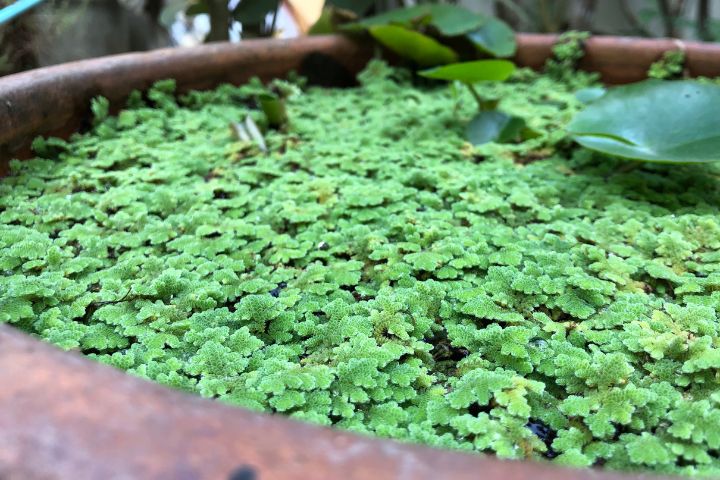
Have you heard about Azolla? This one could be a bit contentious – but I like it!
Azolla is also known as mosquito fern, duckweed fern, fairy moss, or water fern. This little plant is part of a group of seven aquatic fern species in the Salviniaceae family. What’s fascinating about Azolla is how different it looks compared to your usual ferns. It’s more like duckweed or some kinds of mosses in appearance. Out of all the fern species out there, Azolla filiculoides is one of just two that scientists have fully sequenced – pretty cool, right?
Now, here’s a fun fact: it’s believed that Azolla played a huge part in shaping our planet’s climate. Back in the Eocene era, it grew so much that it absorbed a ton of carbon, leading to a global cooling event that affects us even today.
But there’s a catch. When Azolla is introduced to new environments, like wetlands or freshwater lakes, it can become a bit of a troublemaker. It’s known to be invasive in some places, changing the aquatic ecosystems and affecting biodiversity. It’s amazing how such a tiny plant can make such a big impact, isn’t it?
